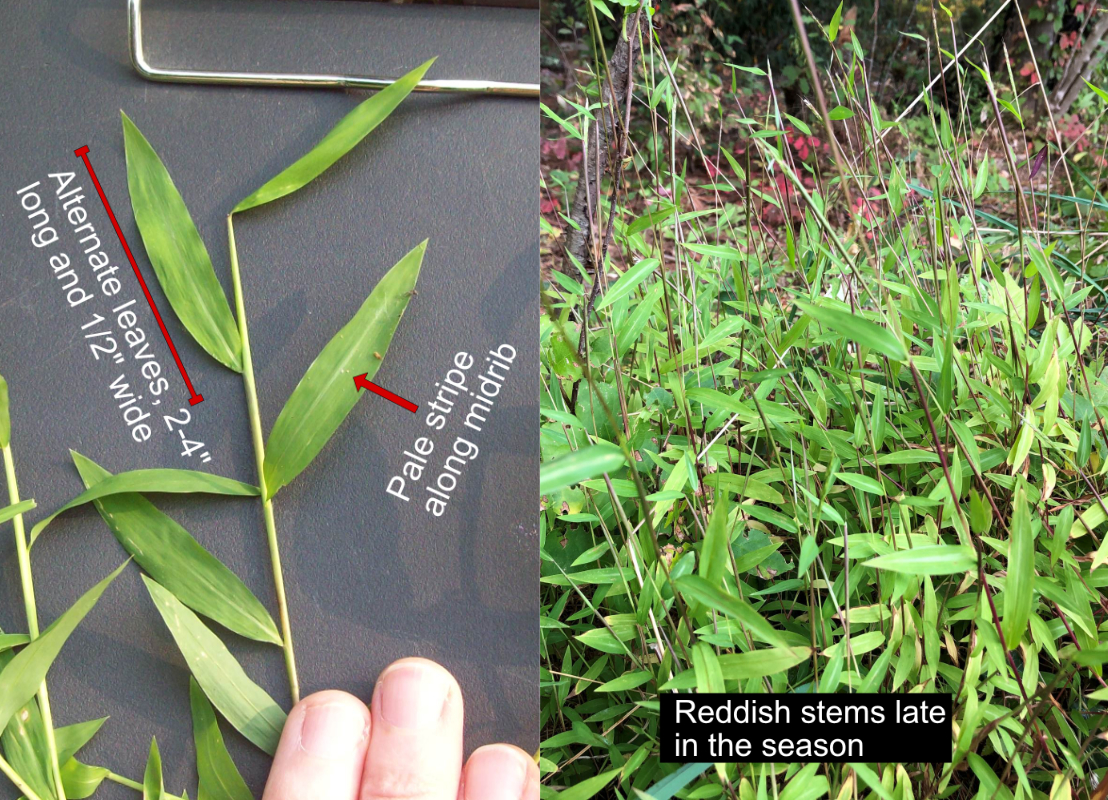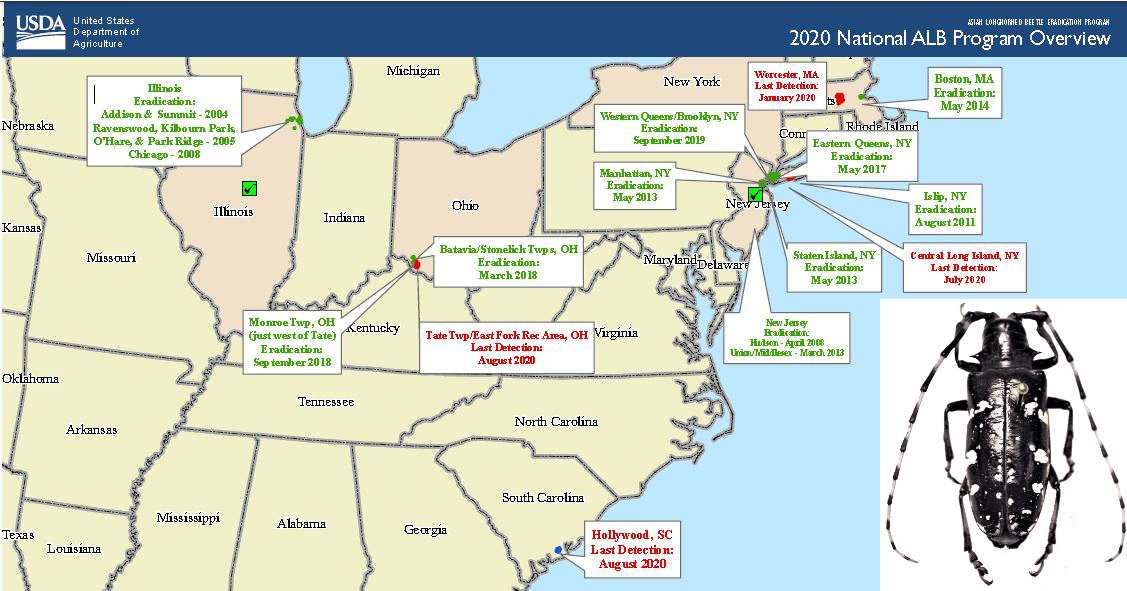Horticulture
In this issue:
 Recently, MELeaf subscribers received a press release announcing the identification of Japanese stiltgrass (Microstegium vimineum) at a nursery in York County. Unfortunately, it is not surprising that the first population of stiltgrass identified in Maine is at a nursery. This invasive plant is known to hitchhike on plant material and infestations in other states have started at nurseries. For this reason, Japanese stiltgrass is on Maine’s do-not-sell list.
Japanese stiltgrass can be difficult to distinguish from other grasses. Nursery professionals should be on the lookout for grasses with these features:
- Leaves that alternate along the stem, 2-4" long and ½" wide, and have a stripe of reflective hairs along the leaf midrib on the leaf's top surface. Individual hairs may be too small to see with the naked eye, but the pale stripe along the leaf midrib is distinctive. The midrib may be slightly off-center.
- The leaf edges and surfaces feel smooth to the touch, unlike some native grasses with stiff hairs along the leaf edge.
- The common name "stiltgrass" comes from the plant's growth habit: it trails along the ground, branching from nodes where it produces "stilts" (roots) to support the new branches. It is shallow-rooted and easy to pull out.
- Plants flower and set seed very late in the season (September-October); most other grasses seed much earlier in the year. Each plant can have one to three seed spikes that resemble crabgrass.
- Stems can develop a reddish tint late in the season.
 If you think you have stiltgrass, check your plants against photos at these websites: Maine Natural Areas Program (MNAP), GoBotany or send an email with photos to horticulture@maine.gov.
New detections of stiltgrass should be controlled to keep this damaging grass from invading Maine's forests and natural areas. It can dominate the forest floor in floodplain forests and other sensitive habitats. For general information on managing stiltgrass and other invasive plants, please visit the MNAP website.
This month US Department of Agriculture’s Animal and Plant Health Inspection Service (APHIS) announced updates to two plant pest quarantines.
Asian Longhorned Beetle (ALB): APHIS placed 58.6 square miles in South Carolina under quarantine for Asian longhorned beetle (Anoplophora glabripennis). This was in response to the confirmation of ALB at a residence in Hollywood, SC (Charleston County) in June 2020 and subsequent surveys over the summer which found additional ALB-infested trees. ALB is a destructive wood-boring beetle that threatens hardwood trees in North America. While ALB has been eradicated from some infested areas, it continues to infest parts of Massachusetts, New York and Ohio. The South Carolina find is a reminder that ALB can pop up in unexpected places and we all must remain vigilant in order to identify infestations early. Adult beetles emerge from trees in late July and remain active through October, but other signs of ALB can be recognized year-round. Go to www.maine.gov/alb for details. Suspect ALB can be reported by submitting a photo to bugwatch@maine.gov.
More information on the federal ALB quarantine
 Green dots represent areas where ALB has been eradicated, red dots are areas that remain quarantined
Pine Shoot Beetle (PSB): APHIS announced that it is publishing a final rule that will remove the federal domestic quarantine for the pine shoot beetle (Tomicus piniperda) effective November 2, 2020. APHIS, in consultation with state departments of agriculture, determined that pine shoot beetle is a minor pest that can be controlled locally, given its slow spread and the minimal damage that it causes to primarily red pine. Removing the quarantine ends APHIS' domestic regulatory activities for this pest such as issuing permits, site visits, and conducting investigations of violations. It also reduces costs for both stakeholders and APHIS, allowing APHIS to focus limited resources on higher risk pests and allowing states to determine the best approach for managing PSB within their boundaries.
Maine currently is considered partially infested with PSB and maintains a state PSB quarantine. In response to the elimination of the federal quarantine, the Horticulture Program will likely consider modifying or eliminating the state PSB rules sometime soon. This will be a process that includes public input and we will keep the nursery industry informed as any proposed changes take shape.

The Northeast Greenhouse Conference and Expo announced that they will offer a webinar series this fall, beginning Nov. 4. Sponsored by New England Floriculture Inc. the webinar will deliver content relevant to greenhouse pests, diseases, biocontrols, PGRs, and sanitation. Although the Northeast Greenhouse Conference and Expo was postponed to 2021 due to the Coronavirus pandemic, these webinars will provide important education (and pesticide recertification credit) for the greenhouse community in 2020. Pesticide recertification credits are available for the New England States and New York.
Dates, topics and registration information
|
Statewide collection of greenhouse plastic for recycling began on Friday, September 25. Please follow the folding and labeling instructions, check the map for specific site days and hours of operation, and pre-register your bundles for drop off. Most sites will be accepting pre-registered bundles through December 15.
More information from UMCE
|